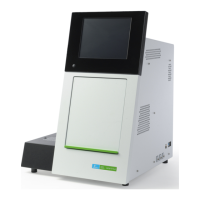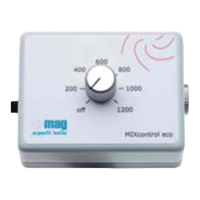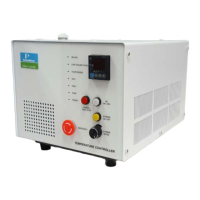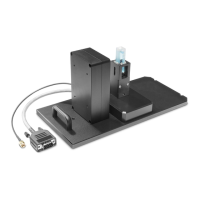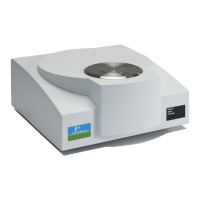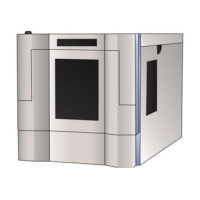Data Analysis 49
V4.2 LabChip GX User Manual PerkinElmer
How the Software Analyzes RNA Data
The LabChip GX RNA Assay Analysis determines the quality of the
RNA sample by measuring the relative amounts of know RNA
fragments relative to the total RNA present in the sample. Results
for each well are calculated after all data for the well has been read.
The data analysis process for RNA assays consists of the following
steps:
1 Raw data is read and stored by the system for each individual
well.
2 The data is filtered (see “Data Filtering” on page 307) and the
resulting electropherograms of all wells are plotted. The filtering
algorithm settings can be changed and the data can be
reanalyzed after the run is finished. (See “Reanalyzing a Data
File” on page 95.)
3 A curve spline fit to the data is performed to generate a baseline
above which RNA fragment peaks are detected. This baseline is
displayed as a blue line on the electropherogram when Show
Peak Baselines is selected in the Graph View Properties (see
page 164).
4 Peaks extending above the baseline are identified (see
“Understanding Peak Finding” on page 108) for all wells and are
tabulated by migration time. The settings of the peak find
algorithm can be changed and the data can be reanalyzed after
the run has finished. The peak find settings can be changed for
all or only certain wells.
5 A sizing ladder (see Figure 14), which is a mixture of RNA
fragments of different known sizes, is run first from the ladder
vial. The concentrations and sizes of the individual nucleotides
in the ladder can be changed on the Analysis Tab.
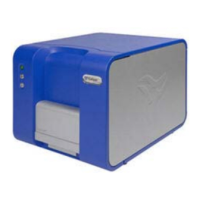
